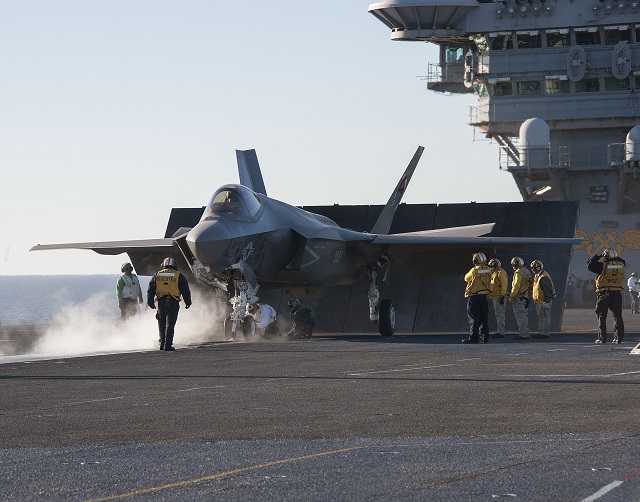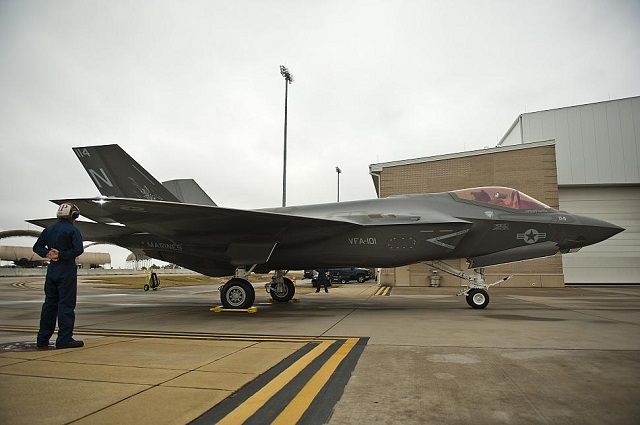 PACIFIC OCEAN (Nov. 4, 2014) An F-35C Lightning II carrier variant joint
strike fighters conducts the first catapult launches aboard the aircraft
carrier USS Nimitz (CVN 68). The F-35 Lightning II Pax River Integrated
Test Force from Air Test and Evaluation Squadron (VX) 23 is conducting
initial at-sea trials aboard Nimitz. (U.S. Navy photo courtesy of Lockheed
Martin/Released)
PACIFIC OCEAN (Nov. 4, 2014) An F-35C Lightning II carrier variant joint
strike fighters conducts the first catapult launches aboard the aircraft
carrier USS Nimitz (CVN 68). The F-35 Lightning II Pax River Integrated
Test Force from Air Test and Evaluation Squadron (VX) 23 is conducting
initial at-sea trials aboard Nimitz. (U.S. Navy photo courtesy of Lockheed
Martin/Released) |
|||
The F-35C model brings 25 percent more range and a bigger weapons bay.
It also allows the Marine Corps to fly aboard Navy aircraft carriers,
which continues an effective and long-standing tactical air integration
program between the Navy and Marine Corps. "In the past, Marines have been trained to fly the Navy's F-18 Hornet to share the load of deployment cycles," said Ryan. "Now, Marine pilots will be flying the F-35C with the Navy's Carrier Air Wings while deployed aboard aircraft carriers." The first operational Marine Corps F-35C fleet squadron, VMFA-115, is scheduled to stand up at Marine Corps Air Station Beaufort, South Carolina, in 2019. "It's exciting to be on the ground floor of the F-35C and an enormous honor to be the first F-35C Marine pilot," said Ryan. "I look forward to being a part of VFA-101 and the future of what this aircraft will bring to the fight for our Marines." The F-35C Lightning II carrier variant Joint Strike Fighter completed its first phase of developmental test (DT) aboard an aircraft carrier Nov. 14, three days ahead of schedule aboard USS Nimitz (CVN 68). During the DT-I event, F-35C Lightning II Joint Strike Fighter (JSF) the F-35 Lightning II Integrated Test Force (ITF) from Air Test and Evaluation Squadron 23 (VX-23) located at Naval Air Station (NAS) Patuxent River in Patuxent River, Maryland, tested the carrier suitability of the aircraft and its integration with carrier air and deck operations in the at-sea environment, achieving 100 percent of the threshold test points. |
|||
U.S. Marine Corps Received Its First F-35C Lightning II Carrier Variant
- Posted On











